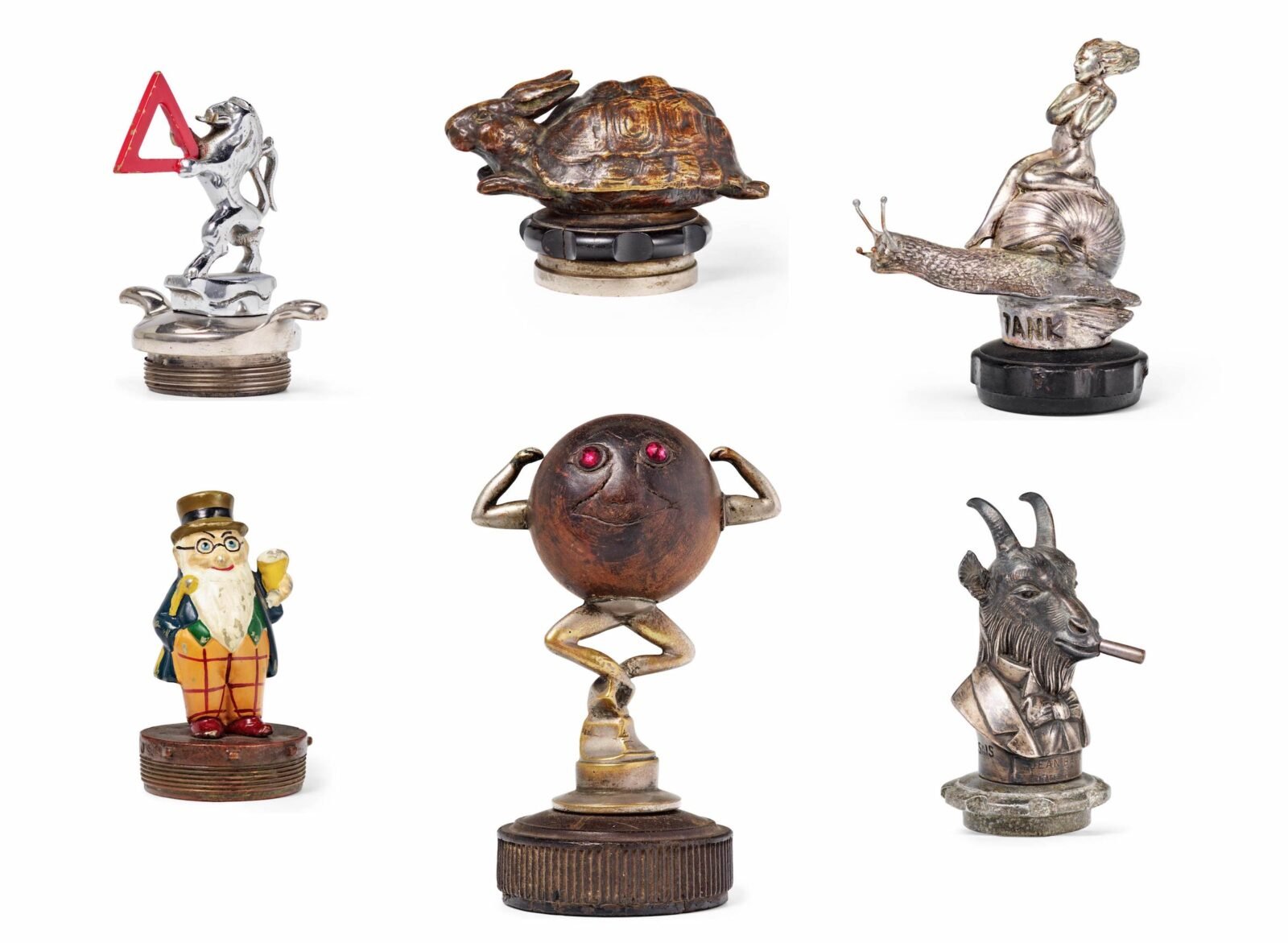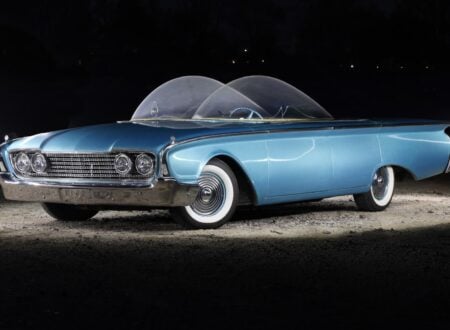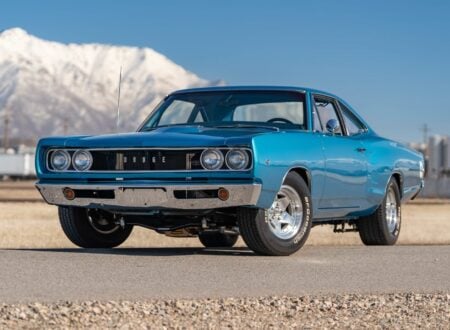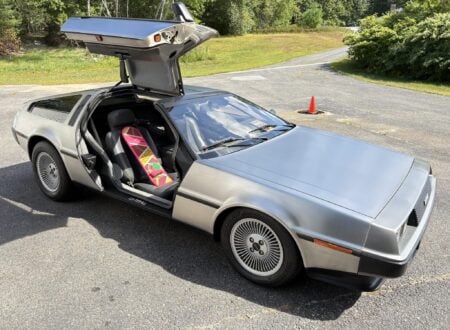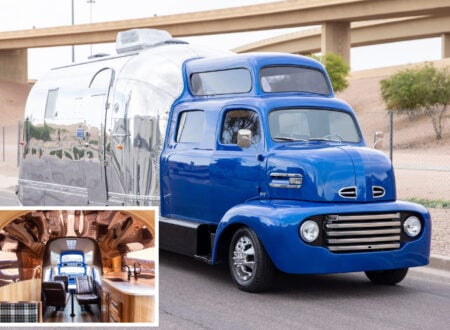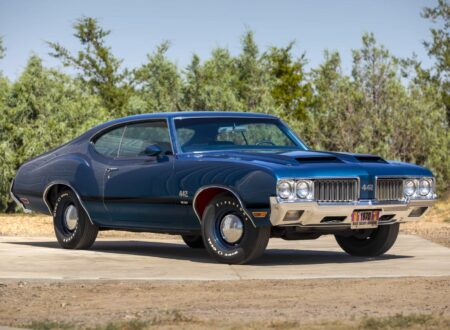These our our favorite mascots from the upcoming March Fine Motoring Mascots Online Sale currently being held by Bonhams. Each of these mascots is available individually with bid ranging from $100 USD on up, and the only thing they all have in common is that they’re all kind of strange. In a good way. Mostly.
One of the truly shameful things about the evolution of the automobile is that the humble mascot got left behind somewhere around the time of WWII. For the uninitiated, automobile mascots are essentially decorative radiator caps that have little “mascots” on them that would ride out at the front of the vehicle – sometimes to bring luck and sometimes to bring humor.
The most famous of these mascots is of course the “Spirit of Ecstasy” ornament used on Rolls-Royces, but back in the early part of the 20th century almost all cars had prominent radiators mounted up front, and a huge industry rose to sell unique mascots to go on them.
Today this industry is all but gone, however there is a healthy global community of collectors who buy and sell original mascots. The prices do range quite significantly however it’s usually possible to get unique pieces for $100 or a little more, making the barrier to entry low for newcomers.
Below we’ve listed our favorite mascots from the sale and added the description from Bonhams with a link to each individual mascot’s page where you can bid on it online if you want to put it on your desk.
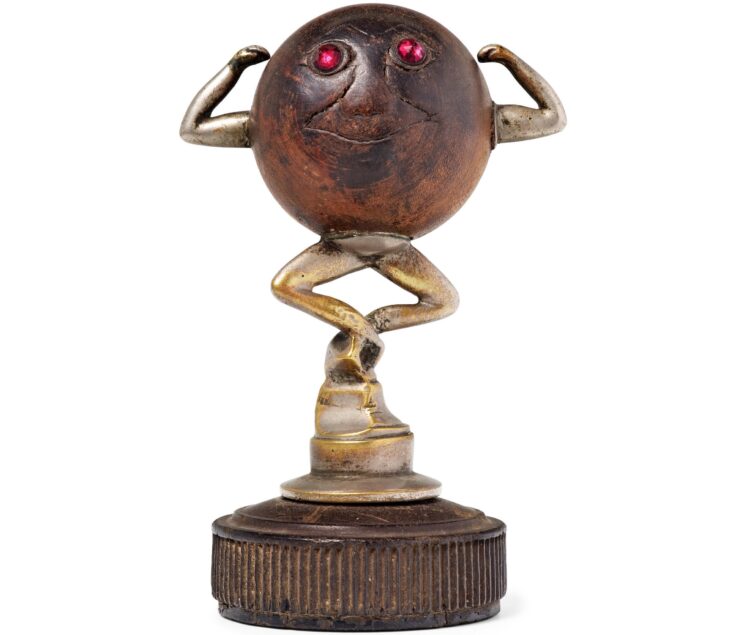
⤉ A “Lucky Touch-Wud” Mascot, British – Circa 1914
This well-worn wooden ball was designed to impart luck to the superstitious, touching wood has long been thought to help keep bad juju at bay so what better way to ensure you always have some wood handy than by screwing a nice piece to the front of your car.
Description: A wooden ball with glass eyes and nickel-plated bronze arms and legs, 4 inches high, on period radiator cap.
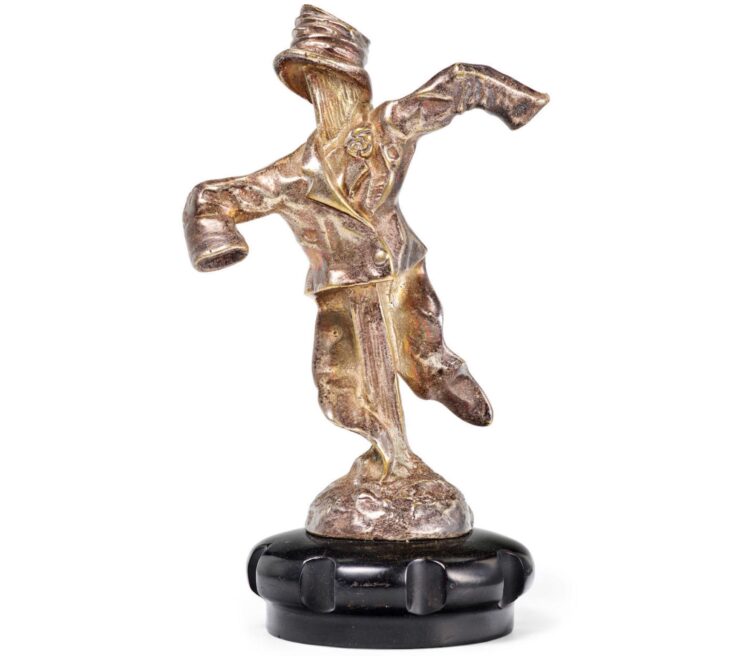
⤉ A Scarecrow Mascot by E. Charles, French – Circa 1922
This unusual, award-winning design shows a scarecrow as it’s tussled by the wind, giving it the illusion of being blown by the airflow as the car drives along.
Description: Signed, nickel plated bronze, 5 inches high, on Bakelite radiator cap. This mascot design won a diploma at the Concourse du Journal de L’Auto in 1922.
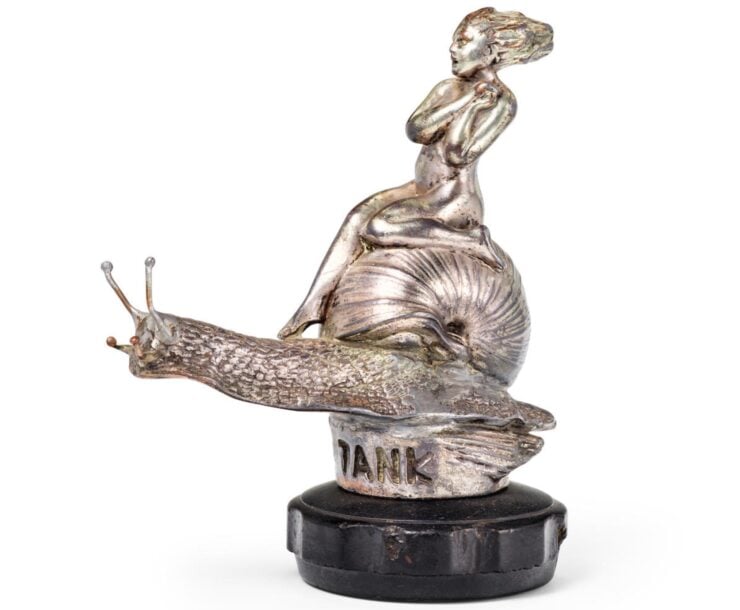
⤉ A “Le Tank” Mascot by Brunswick
This is one of the most eye-catching designs in the collection, it shows a girl riding a snail with her hair swept back giving the impression they’re traveling at speed. Many of us have previously owned cars that could perhaps best be described as snails, but they do have a way of winning you over.
Description: Signed L. Brunswick, nickel plated alloy, 5.5 inches high, on a radiator cap.
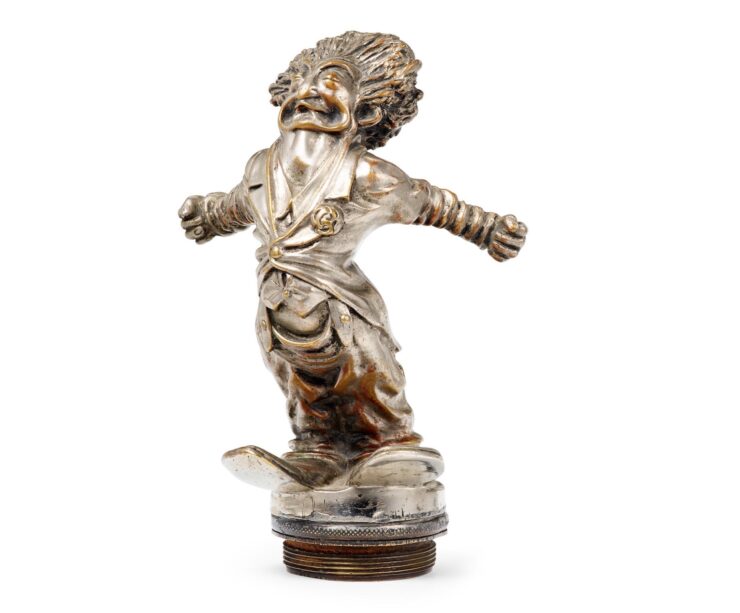
⤉ A Clown Car Mascot – Circa 1920s
This clown looks like he’s having the time of his life, we don’t know what the story behind it is but cars out there with diplomatic plates on them that would be well-suited to a clown mascot on the front between the flags.
Description: Stamped with makers mark, the nickel-plated well-dressed by unkempt figure on integral radiator cap 7 inches high overall.
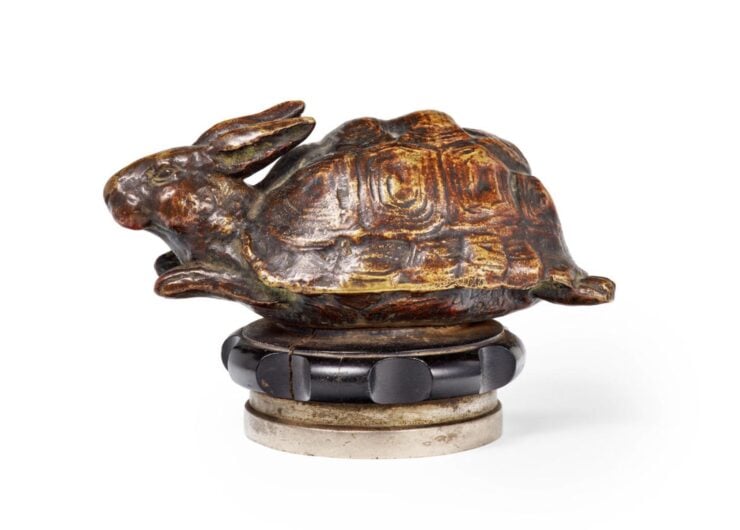
⤉ A “Tortoise and the Hare” Mascot, French – Circa 1924
This unusual mascot features a hare in a tortoise shell, a mashup from the famous fable of “The Tortoise and the Hare.”
Description: Signed A Luppi bronze, 2.5 inches high, on a period radiator cap.

⤉ A “Chat de la Mere Michel” Mascot by Henri Molins, French – Circa 1920s
This mascot shows a startled cat on a rooftop. The name translates into English as something like “Mother Michel’s Cat” so it’s likely a period reference or an in-joke.
Description: Signed, nickel plated bronze, 5.5 inches high on a period radiator cap.
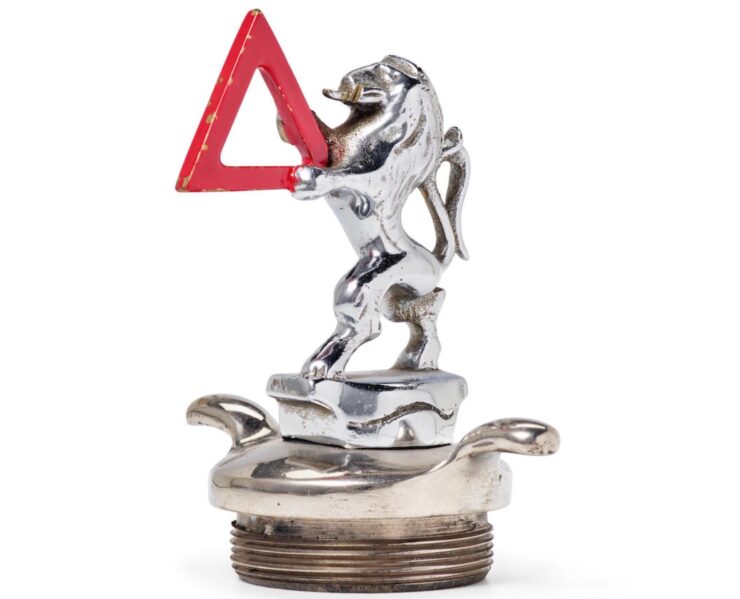
⤉ A “Rampant Lion” Mascot, British – Circa 1930s
This mascot shows a British lion holding a red warning triangle. We’re mostly family with the use of these triangles today when we’re broken down by the side of the road or changing a tire – so depending on how reliable your car is this could be an ideal mascot.
Description: The chrome plated figure holding a red painted warning triangle, 3.5 inches high, on a nickeled radiator cap with two turning lugs.
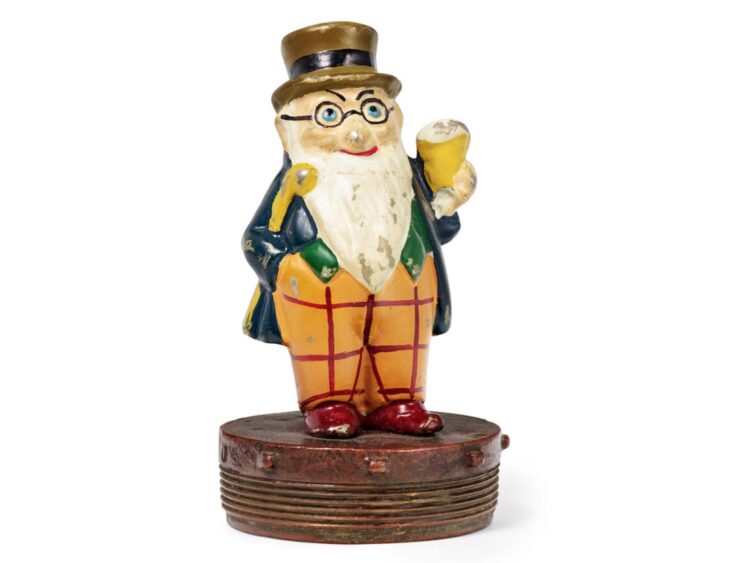
⤉ A “Mr Younger” Mascot, Scottish – Circa 1920s
This one is a bit of a personal favourite, it’s believed that this mascot was fitted to the radiator on the front of a delivery truck for the William Young Brewery. It shows the company’s founder holding a pint and making a mischievous facial expression.
Description: By repute originally fitted to a William Young Brewery delivery truck, painted brass depicting William Younger with his long beard, top hat and waistcoat holding a pint of Younger’s famous ale, 3 inches high, on a period radiator cap.
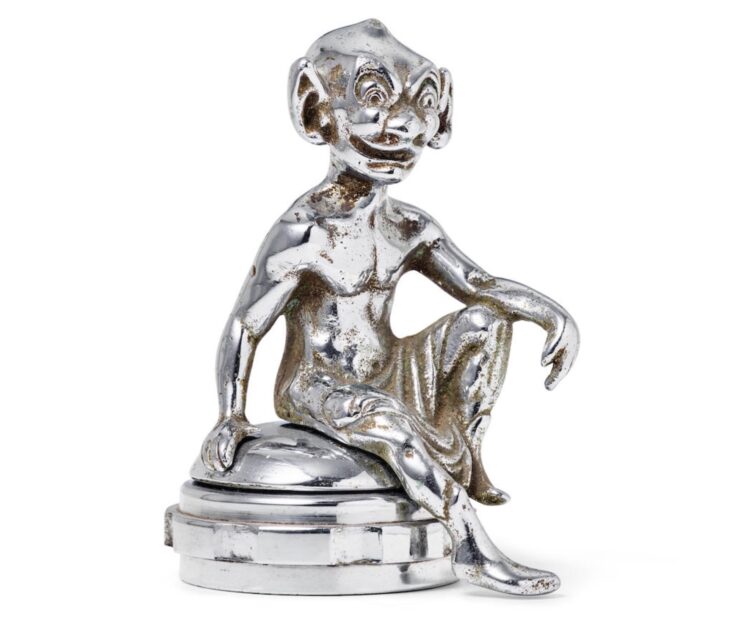
⤉ A “Seated Billiken” Mascot – Circa 1920s
The “Billiken” was a lucky charm popular in the early 20th century, it’s a small little creature that appeared to its creator Florence Pretz in a dream. It’s likely that in this context it was hoped that the Billiken would bring luck and safety to the car and its occupants.
Description: Nickel-plated, 4.5 inches High, on original radiator cap.
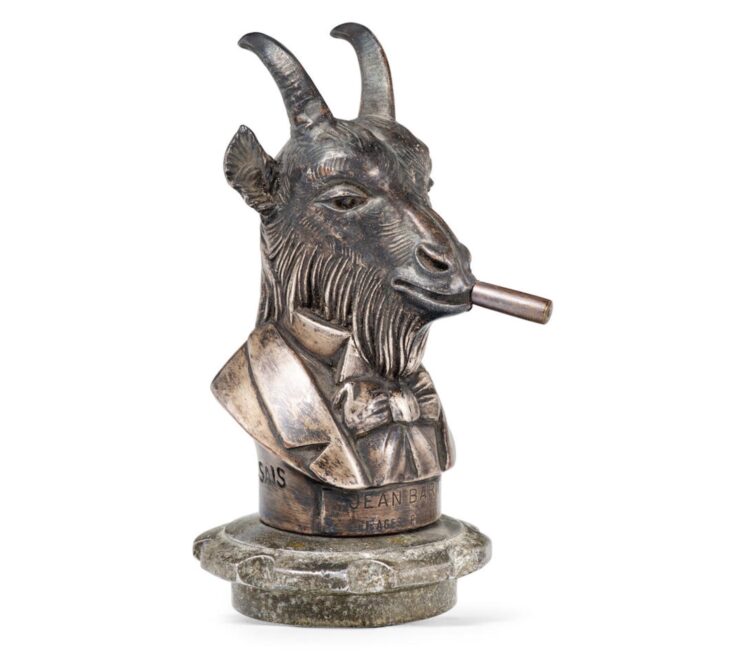
⤉ A Peugeot Goat Mascot, French – Circa 1920s
This distinguished, cigar-smoking billy goat was used as a mascot on a 1920s-era Peugeot in France.
Description: Marked ‘Jean Bari’ and ‘Cirages Roubaix’ on the front and ‘Banquet de Massais’ on rear, nickel plated bronze bust of a smartly dressed goat smoking a cigar, 6 inches high, on a period radiator cap.

